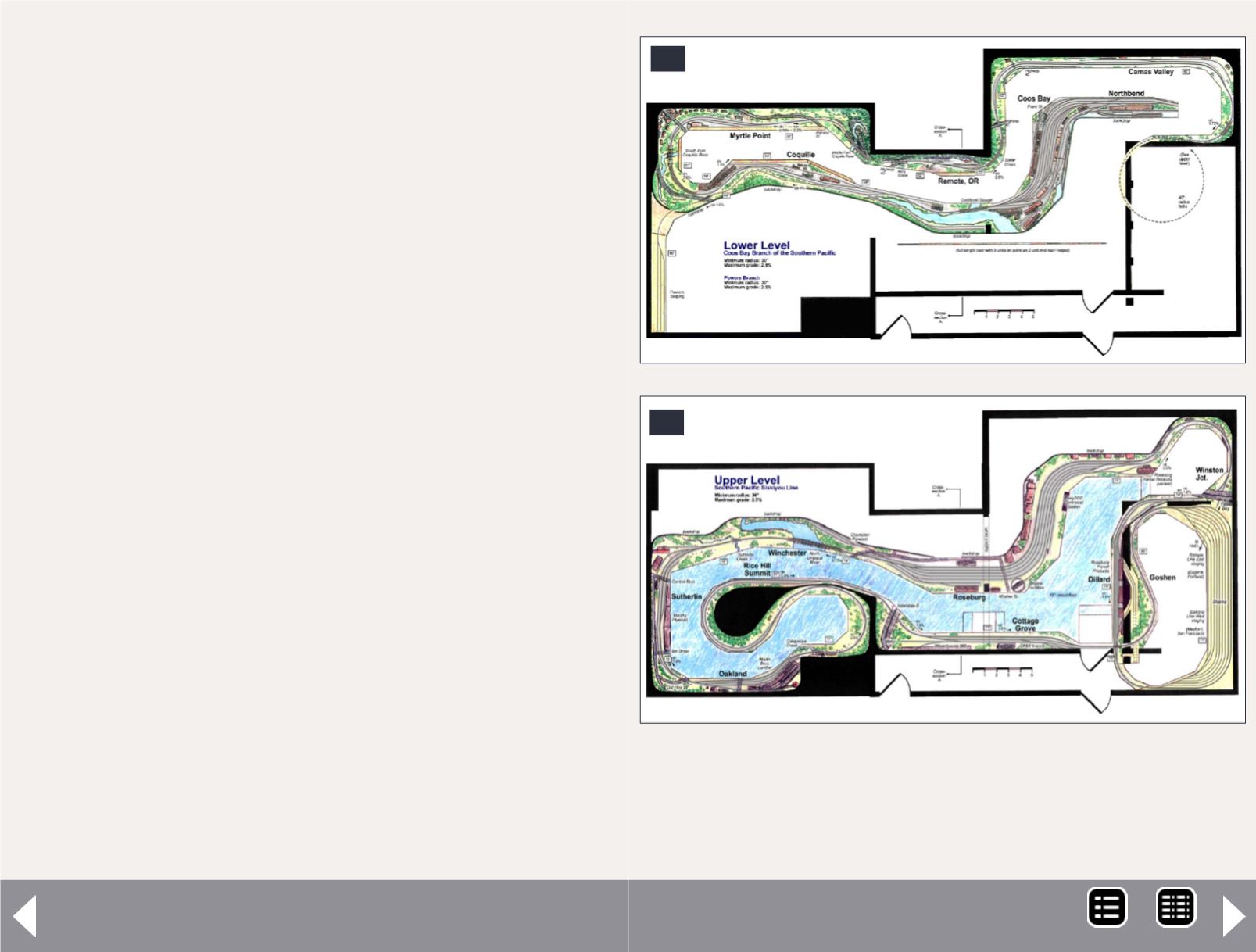
don’t count track where the connecting track would be fouled.
Don’t forget that one track running through any staging area
was counted in the mainline total and is not to be included in
this total.
Remember the one exception – the offstage portion of a single-
track car storage/interchange track is “staging,” not “mainline.”
SERVICE TRACK (cars):
Service track is loco storage, servicing,
turntable, turntable leads, and so on. The rule of thumb is: if
the track is used to store cars, then it is storage (or staging if it
is “offstage”), if it is used to store locos and is traversed primar-
ily by only locos, then it is loco service track. Measure the total
amount of track used to service locos and compute the cars
equivalent.
CONNECTING TRACK (cars):
Connecting track is what’s left.
Compute it as:
Connecting track = total track - mainline - passing - storage -
staging - service
Connecting track is what allows us to make up and break down
trains, and to maneuver cars from the main to industrial spurs
and yard tracks. It turns out this track is essential to getting a
layout that can move a lot of cars.
PASSING SIDINGS:
Record the number of passing sidings.
PASSING TRAIN LENGTH (Cars):
Write this stat as three values
separated by slashes – longest/average/shortest. Longest is
the length of your longest passing siding in cars. Average is the
length of an average passing siding in cars, computed as: pass-
ing track / number of passing sidings. Shortest is the length of
your shortest passing siding in cars.
STAGING TRACKS:
Record the number of staging tracks.
Layout design assessment - 4
2a
3a
2a:
Lower deck
track plan for Joe Fugate’s HO Siskiyou Line.
3a:
Upper deck
track plan for Joe Fugate’s HO Siskiyou Line.
Captions continue on the following pages.
MRH-Oct 2014


